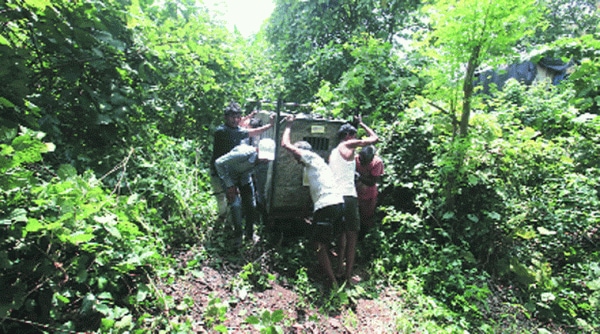- India
- International
Camera trappings show SGNP leopards frequent Thane, Mulund region
The study, funded by National Geographic Society and supported by the state forest department, tracked movements from Sept to Dec 2013
 The captured leopard footage will be part of National Geographic’s Urban Jungle documentary series
The captured leopard footage will be part of National Geographic’s Urban Jungle documentary series
Leopards of the Sanjay Gandhi National Park (SGNP) frequent Thane and Mulund region, followed by Aarey Milk Colony and Borivali areas adjoining the park, found a study titled “Camera trapping leopards of Mumbai’s forests” by wildlife expert Krishna Tiwari.
The highest number of camera observations of leopards was from Thane and Mulund region of SGNP (66 observations), with most of the footage recorded from the Dug line bridge area, followed by 26 observations in Aarey Milk Colony and just 12 observations in the Borivali region.
Around 35,000 (including 1,800 tribal) families reside in illegal as well as ‘legal’ settlements within and along the periphery of the park.
The study, funded by National Geographic Society and supported by the state forest department, tracked the movements of leopards from September to December 2013. Using camera traps, the study sought to determine the activity patterns of leopards and identify which regions of the park leopards more frequently visit.
The captured leopard footage will be part of National Geographic’s Urban Jungle documentary series. Behaviour of leopards such as walking, scent marking, drinking and playing (with the camera) are also visible in the footage.

Beside camera footage, instances of direct and indirect sightings by Tiwari and 15 local volunteers, trained in handling camera traps, as well as locations of leopard-human conflict were also noted. Indirect sightings include observations of leopard pugmarks, scrape marks, excrement as well as carcass remains of leopard prey.
Although camera footage was less in Aarey Milk Colony, the number of direct and indirect sightings was high in this zone, a leopard-human conflict hotspot, with the largest human population- of all three regions, as well as a high abundance of small domestic animals available as ‘convenient prey’ for the leopards, the study stated. The study concluded that leopards of SGNP prefer to roam near human settlements as they have access to easy prey.
The national park, covering approximately 104 sq km, houses 59 species of mammals, 552 species of reptiles, with leopards being the main predator. A camera trap survey conducted by the forest department in 2011-12 had revealed that the park is home to 21 leopards, half the number recorded in 2001.
The study found that the high rate of encroachment has led to a drastic reduction in habitat for the leopard and its prey base and thereby, the predator inevitably wanders from the forest areas into these settlements. “Human habitat is attractive for the leopards because they provide abundant prey in the form of dogs, rodents, chickens, goats and pigs. Sadly, these leopards are just roaming in their territory now occupied by humans and the forest department is forced to trap any leopards involved in human attacks and keep it in captivity,” said Tiwari. Over the past decade, more than 30 leopards have been captured and caged because of the resultant leopard-human conflict.
Data gathered through the camera traps will be used to improve conservation strategies to help mitigate human-leopard conflict in and around SGNP, say forest officials. “Such camera trapping methods identifies animals (male, female, cubs) in a particular area and the probable area in which they move around, and we use this information to intensify patrolling. This is specially done when we get reports of a leopard moving dangerously close to human habitation leaving behind natural prey,” said K P Singh, chief conservator of forests, Thane forest division. “We conduct regular awareness camps in the Thane Mulund and Aarey areas, mainly to educate people to avoid activities such as leaving garbage around, which may attract leopards.”
Other suggestions in the study to mitigate the conflict included radio-collaring leopards and installing camera traps over longer periods to get an estimation of leopard abundance and distribution. “This will help determine whether the leopards are straying into human habitation because there is a lack of natural prey in the park or because food sources are easily retrievable from human settlements,” Tiwari added.
anjali.lukose@expressindia.com
Apr 24: Latest News
- 01
- 02
- 03
- 04
- 05







































